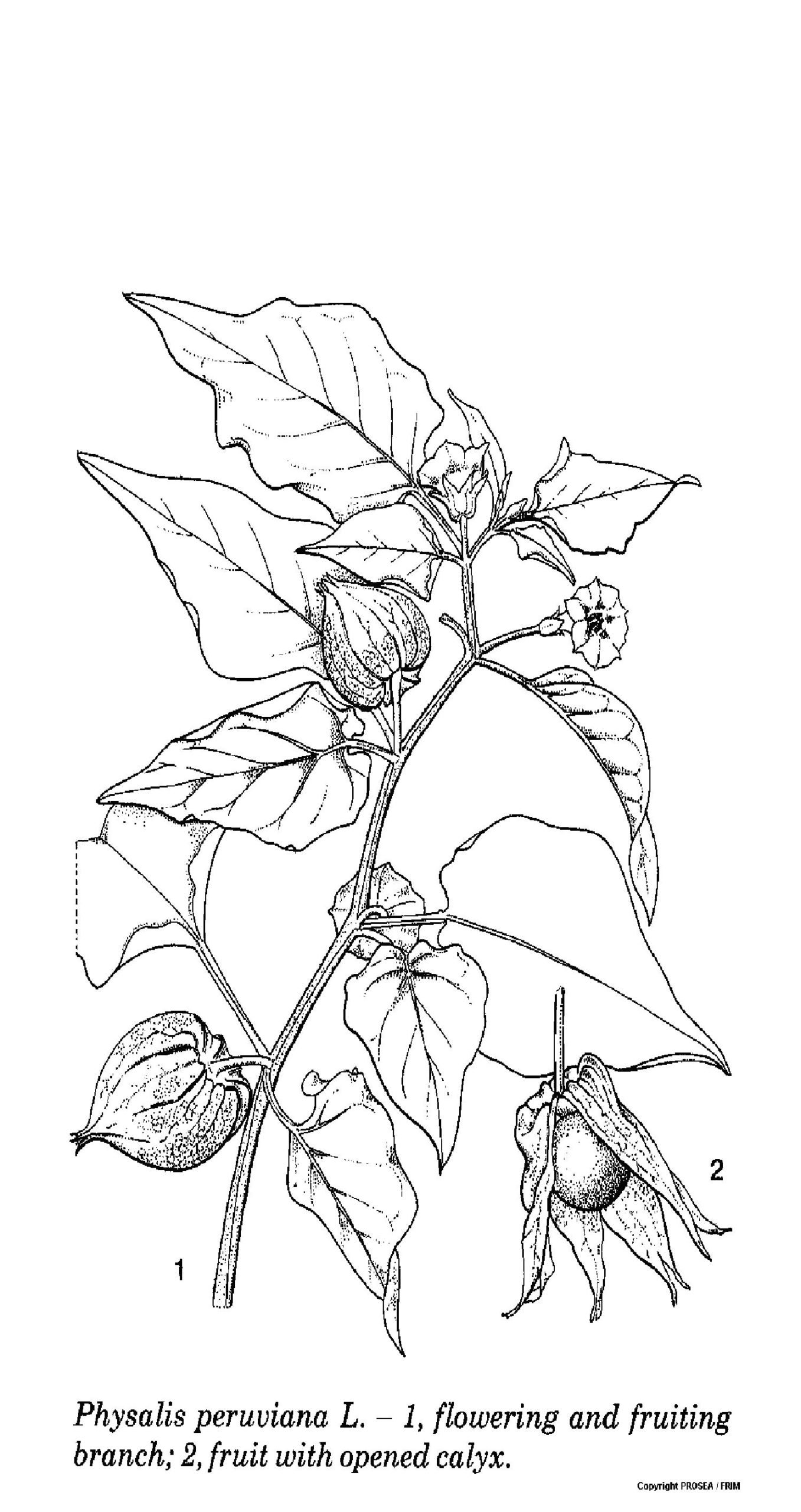Physalis peruviana L.
Family
Solanaceae
Synonyms
None
Vernacular Names
| English |
Cape gooseberry. |
| Indonesia | Ceplukan, cecendet badak. |
| Philippines | Lobo-lobohan. |
| Thailand | Gusboeri (Bangkok). |
Geographical Distributions
Physalis peruviana occurs naturally in the Peruvian and Chilean highlands. During the last 200 years, it has been cultivated and become widely naturalised elsewhere in tropical highlands. It is also grown in the subtropics and in mild temperate areas. The plant is common in Southeast Asia, but not cultivated much.
Description
This is a perennial herb, 0.5-2 m tall, with purplish, ribbed, spreading branches and creeping rootstock and densely hairy.
The leaves are subopposite, ovate, measuring 5-15 cm x 4-10 cm, cordate at base, acuminate at apex, entire or shallowly toothed while the petioles are as long as the blades.
The flowers are solitary, pendent and axillary. The pedicel is 1 cm long and longer in fruit. The sepal is 5-toothed. The petal is 2 cm in diametre, slightly 5-lobed, yellow with 5 large dark brown-purple spots within while the anthers are purple. The stigma is subcapitate.
The fruit is a spherical berry, 1-2 cm in diametre, orange-yellow, smooth, enclosed in the densely hairy, ovoid and inflated bladdery sepal (husk). The pulp is juicy while the seeds are numerous, yellowish and very small.
Ecology / Cultivation
The ecological requirements are similar to those of tomato, but the temperature range appears to be somewhat cooler: the plants are not killed by slight frost. They also flower and fruit best in fairly cool weather; high temperatures are detrimental to flowering and fruiting. Hence, in areas with a seasonal climate (also in the subtropics), the crop is timed to fruit in the cool season. In Indonesia, plants are found at altitudes ranging from 700-2300 m, but the crop grows best above 1500 m. The overcast skies in many highlands and the shades of open forests in naturalised stands suggest its tolerance to low light levels, but fruiting seems to be best in full light. Ample rain and rich alluvial soil lead to lush growth and delayed fruiting. The fruit is spoiled if wet conditions prevail during the harvest season. Moisture stress can impose dormancy. Well-drained sandy loams with good organic matter content are preferred.
Line Drawing / Photograph
References
- Plant Resources of South-East Asia No.2: Edible fruits and nuts.



